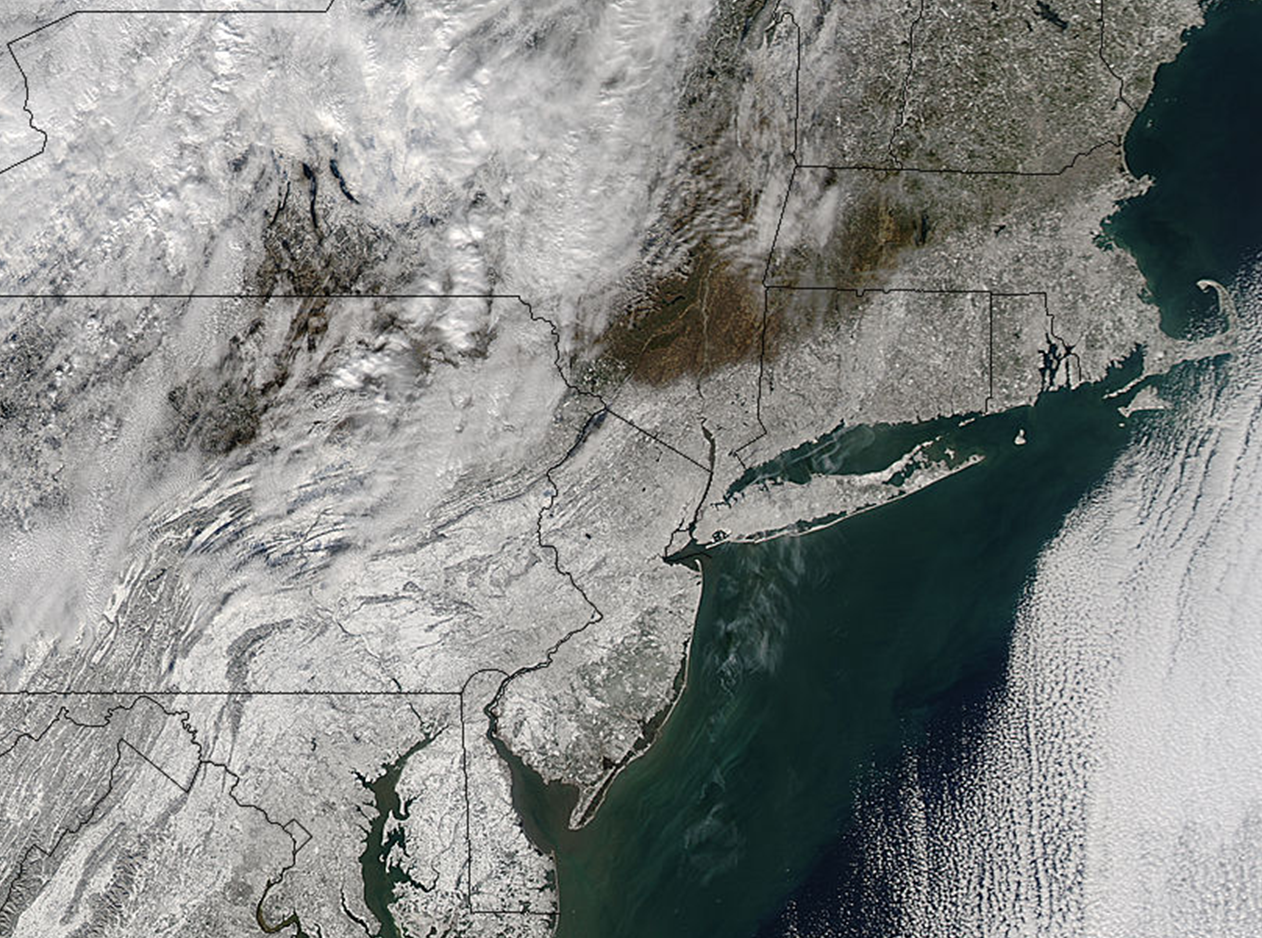
Sunshine is delicious, rain is refreshing, wind braces us up, snow is exhilarating; there is really no such thing as bad weather, only different kinds of good weather. ~John Ruskin
Friday, September 28, 2018
January 22-24, 2016 Blizzard
The Blizzard of 2016, known as Snowzilla or Winter Storm Jonas, delivered many inches of snow in the Northeast United States and the Mid-Atlantic. Specifically, Newark, NJ received about 2 feet of snow. Snowzilla caused more than 30 deaths, due to car accidents, hypothermia, heart attacks while shoveling snow, and carbon-monoxide poisoning from clogged exhaust pipes from snow. There was about $600 million to $300 billion worth of property damage and 630,000+ power outages for multiple days. Once the snow melted, the flooding was considered worse than Storm Sandy. The National Weather Service describes a blizzard by its duration, wind speeds, and the reduction in visibility. Another blizzard in 1996 was compared to the Snowzilla because of its similar damage costs, the death toll in NJ, snowfall, and impacted states.


Thursday, September 20, 2018
Lewis Fry Richardson
Lewis Fry Richardson
Lewis Fry Richardson was born on October 11 of the year 1881, to a quaker family in England. Both his parents, Catherine Fry and David Richardson, partook in the field of business. His parent's circumstances allowed Lewis to attend some of the most prestigious schools; this includes Newcastle Preparatory, Bootham School, Durham College of Science, and King's College, Cambridge. His influences in these various schools allowed Lewis to acquire a strong foundation in numerous fields of science. One influence in particular gave Lewis the drive to learn about meteorology; an encounter with a man named J Edmund Clark, due to his expertise in meteorology.
Lewis was not a man of single focus, for he has knowledge in many subjects. In fact, Lewis is a mathematician and a physicist. Having the experience in these fields allowed him to construct a goal: making weather forecast predictions based on mathematical algorithms. There, however, was one factor that quelled his process to proceed with his idea and that was the first World War, where he served as an ambulance driver in Europe.
This did not stop him, after his service he returned back to the lab to hand write equations based on the data he collected with his experiments. At Benson he looked at clouds and rain by using thermodynamics and radiation. He wrote a book on his finds that included every algorithm he solved. Another scientist disagreed with his work, but later on in 1993 a scientist named Lynch showed that Lewis's calculations had few errors and stated that it was "impressive" since he did everything by hand. He later had an idea to create a company that would be able to produce weather predictions around the clock. This was called the Forecast Factory, which included 65,000 people, each focusing on a section of the globe and figuring out the weather in that area. This was equivalent to using 100,000 super computers with powerful processing units.
(Random Data Base Center)
(Lewis Fry Richardson)
Sunday, September 16, 2018
Guy Stewart Callendar, born February 8, 1898 in Montreal, is the reason that climate change is at the forefront of science research today. While he most contributed towards civilian and military advancements as a steam engineer and and inventor, he is also accredited for coming up with the "Calendar Effect"/"Greenhouse Effect". Callendar, through intense data analysis, found a direct correlation between the rising levels of CO2 in the atmosphere and and the rising temperatures of Earth's surface. This rather simplistic discovery would eventually lead to all of global warming research. In 1938, Callendar published his works but as novice Meteorologist his findings were completely ignored. It wasn't for a few decades until scientists started to seriously look at the "Callendar Effect". Charles David Keeling verified the work in 1958 putting climate change research to the forefront. Today approximately $30 Billion are spent every year on climate change research and global warming prevention programs. We have come a long way since the work of Guy Stewart Callendar and still have a ways to go before solving the issue.
Friday, September 14, 2018
Delta Flight 191
Delta flight 191 can/should be considered one of the most devastating crashes of all time because this crash resulted in 137 people dying and leaving 28 more injured. The plane was on its way to Dallas-Fort Worth airport from Fort Lauderdale airport before it crashed. The plane crashed because as it was flying through a dark cloud it was pushed by a microburst (an intense small-scale downdraft produced by a thunderstorm or rain shower) and thrown off it's intended flight path. The plane then ended up crashing into a car on a highway in Texas and also crashed into two water tanks. The plane started to burn and began to split apart near the runway at Dallas-Fort Worth airport.
This all happened because the two pilots of the aircraft decided to fly through a storm instead of just delaying or even canceling the flight. The plane was also unable to detect the microburst because the radar equipment was broken. The F.A.A has now made a law stating that no flights are allowed to takeoff or land if there is a storm so that nothing like this ever happens again. In Conclusion Delta Flight 191 was a devastating event but because of it the Aviation industry has now taken a more serious approach on the safeness of the aircraft as well as the people inside of the aircraft and this will help make flying safe again.
Subscribe to:
Posts (Atom)



